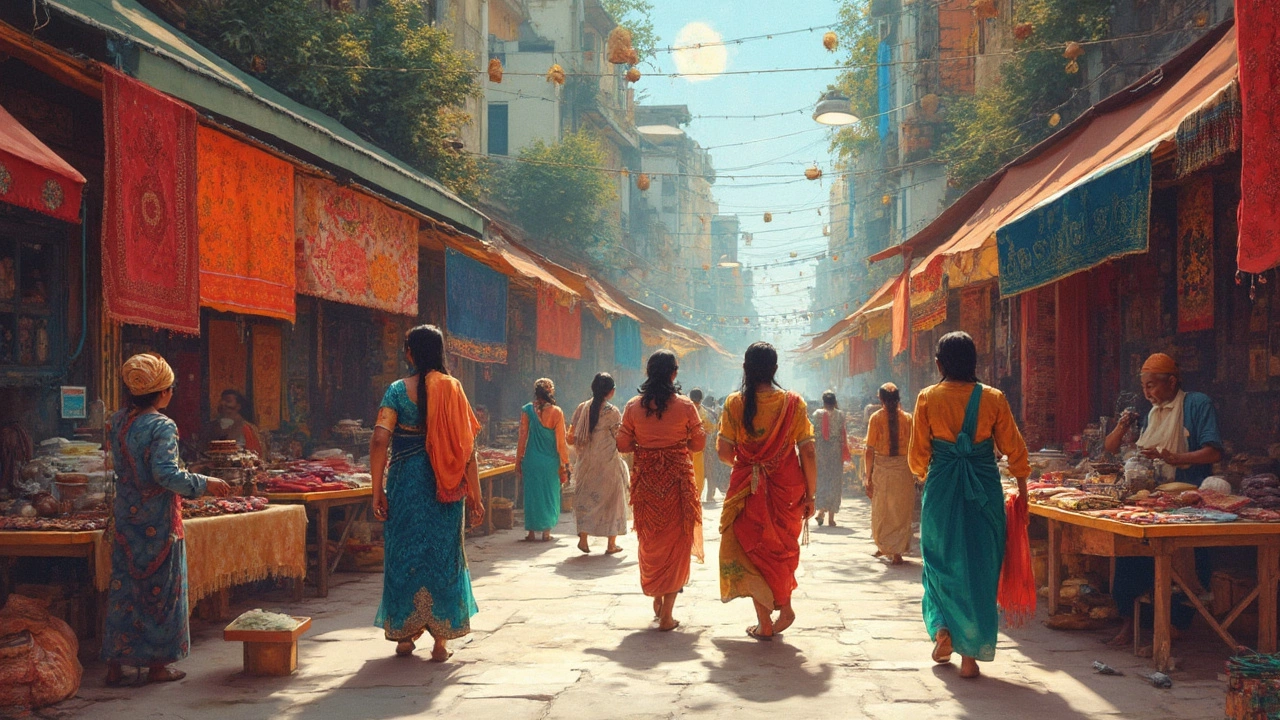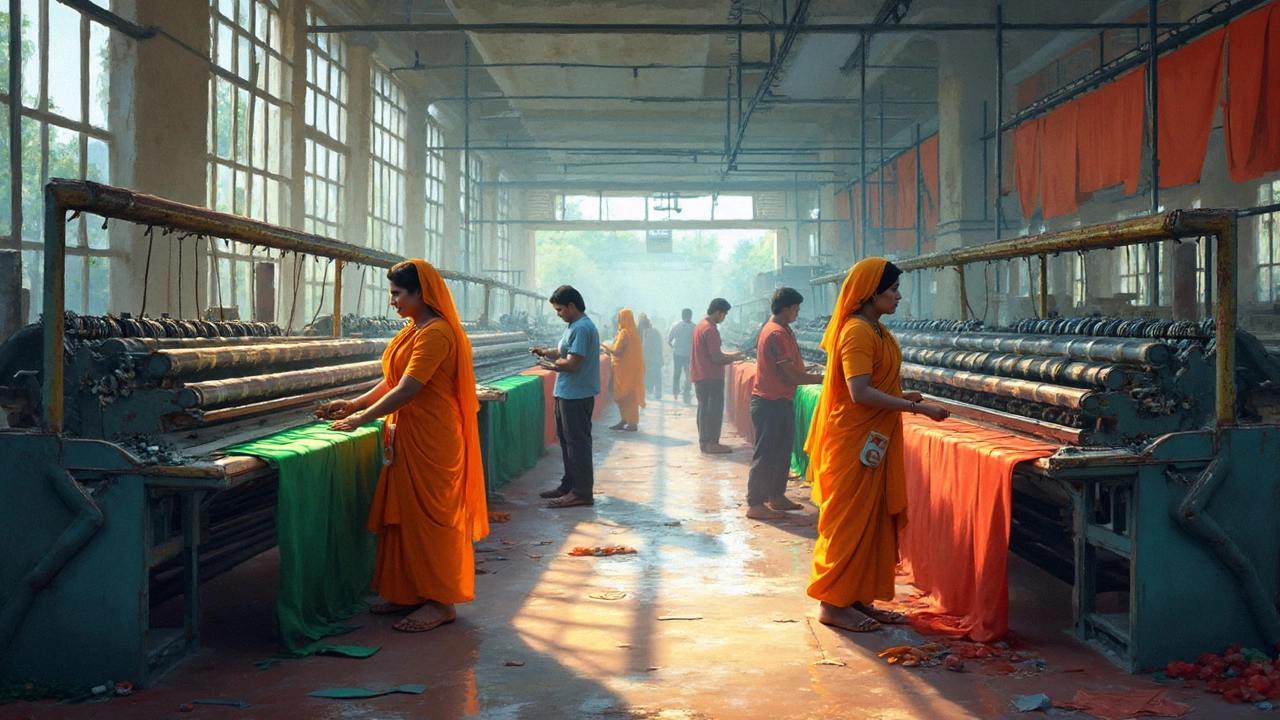You've probably heard about the buzz surrounding Indian textiles, right? So, who's really leading the pack in this vibrant, ever-evolving industry? India has long been a powerhouse when it comes to textiles — think about all that stunning embroidery and those rich, colorful fabrics. But it’s not just the traditional stuff that makes India the king of textiles. It’s how the industry is blending ancient craftsmanship with cutting-edge technology that's catching everyone's attention.
Throw in some big names like Arvind Limited and Raymond Group, and you start to see why this sector is a big deal. These guys aren't just resting on their laurels. They're pushing boundaries with eco-friendly practices and sustainability efforts, making them global players and appealing to eco-conscious buyers.
And let's not forget about innovation. From smart textiles to new ways of weaving, the industry's got a knack for rolling with the times. So if you're looking to understand more about who’s calling the shots in the textile world and why India might just have a permanent crown, you've come to the right place.
- The Evolution of Indian Textiles
- Leading Textile Manufacturers
- Innovations Driving the Industry
- Balancing Tradition and Technology
The Evolution of Indian Textiles
India's textile scene has a history as rich as its fabrics, and it all started thousands of years ago, way back to the Indus Valley Civilization. Yeah, we're talking about times when loom weaving was innovative tech! Fast forward a bit, and you’ll find India famous for its intricate cotton and silk weaving. Who knew our ancestors were already making waves globally with their textile prowess?
Fast forward to the Mughal era – think grand designs, vibrant dyes, and intricate embroidery. The Mughals truly knew how to amp up the fashion game and bring luxury to everyday wear. Their influence still hangs around today, evident in contemporary bridal wear packed with those rich elements.
The British colonial period shook things up. The Industrial Revolution brought mechanical looms which kind of changed the landscape. Traditional skills had a tough time, but they also sparked what you could call a textile rebellion. Handwoven fabrics like khadi gained popularity as symbols of self-reliance and resistance.
Post-independence, Indian textile manufacturers really started flexing their muscles. The introduction of policies supporting textile parks and tech upgradation meant big moves towards modernization. The use of digital technology wasn't far behind, as everything from fabric design to supply chain logistics started relying on it.
Today, Indian textiles aren't just about weaving; it's about innovation. Sustainable practices and organic materials are the new trendsetters. India’s blending ancient techniques with modern eco-friendly practices, making it a key player in the global market.
| Year | Key Development |
|---|---|
| 1500 BC | Indus Valley Civilization's use of looms |
| 16th Century | Mughal Empire introduces luxurious designs |
| 1850s | Introduction of mechanical looms by the British |
| 1947 | Textile revival post-Independence |
From ancient times to modern days, the journey of Indian textiles is full of turns and tales, making it an exciting rollercoaster ride. And trust me, the story is nowhere near ending!
Leading Textile Manufacturers
Diving into the world of Indian textile, a few names immediately stand out for their sheer impact and innovation. These are not just businesses; they're the giants driving the industry forward. One such name is Arvind Limited. Based in Ahmedabad, Arvind has a knack for pushing boundaries. They're all about creating eco-friendly fabrics, and they’ve transformed denim production in ways you'd never expect. Arvind's tag of producing over 100 million meters of fabric a year is no small feat.
Then there's the Raymond Group. If you've ever shopped for high-quality suiting fabric, you know these guys are top-tier. Raymond has been at it for decades, blending style with technology effortlessly. They're not just sticking to traditional methods; they're constantly looking for the next big thing in textiles. That's why they're a favorite, both in India and around the world.
Welspun also deserves a shout-out. Welspun is best known for home textiles and is one of the biggest suppliers of towels and sheets globally. They’ve snagged partnerships with international retail giants, proving India’s prowess goes beyond its own borders. Their innovation in fabric tech, like the HygroCotton technology, shows how seriously they take adapting to modern needs.
And let’s not overlook Vardhman Textiles, another big player hailing from Ludhiana. Known for their yarns and fabrics, they focus on quality like it's no one’s business. Vardhman ensures every thread counts, keeping them in the running with major players on the global stage.
These companies are pretty much setting the stage for the next wave of textile trends. They're playing a big part in India's status as a textile leader, emphasizing how important it is to grow with the times while staying true to their roots.

Innovations Driving the Industry
When it comes to the textile industry in India, innovation isn't just a buzzword—it's the backbone of the business. With high-speed looms and digital fabric printing, manufacturers are always on the lookout for the next big thing. Take Indian textiles giants like Arvind Limited, for instance. They've embraced a range of technologies that’s moving them ahead in the game.
One major area where India's textile manufacturers shine is sustainability. Companies are investing in eco-friendly dyeing processes that significantly reduce water usage. These methods not only help the planet but also cut costs in the long run. How cool is that?
Smart textiles are also trending. These fabrics are designed to interact with the wearer—for instance, athletic wear that monitors your heart rate or temperature-adapting clothes. Such products are giving India a competitive edge on the global stage.
In addition, the rise of digital platforms and e-commerce is reshaping how textiles are marketed and sold. Online fabric retailers are connecting directly with consumers, offering customizations that were unheard of a decade ago.
Check out this quick snapshot of how these innovations impact production:
| Innovation | Impact |
|---|---|
| Digital Printing | Reduces lead time, increases design options |
| Smart Textiles | Opens new niche markets |
| Eco-friendly Processes | Lowers environmental footprint, reduces costs |
| E-commerce | Boosts direct-to-consumer sales |
So, the industry isn't just about beautiful saris or elegant suits anymore. It’s becoming a playground of ideas, combining age-old traditions with tech innovations. And that’s something that makes Indian fabric pioneers leaders in the field.
Balancing Tradition and Technology
When it comes to Indian textiles, striking a balance between tradition and modernity is not just a trend—it's a necessity. India has been weaving fabric for thousands of years, but today’s challenges require a new approach. The key players in this arena are cleverly blending age-old techniques with the latest tech to stay ahead.
Many textile manufacturers in India are preserving traditional skills like handloom weaving and intricate embroidery, which have been around for centuries. These methods are not only an art form but also add value that's hard to replicate. They’re passed down generations, preserving cultural heritage while improving local economies.
On the flip side, technology is transforming the industry at lightning speed. Automated looms, AI-driven quality checks, and sustainable fibers are now part of the game. For example, companies like Welspun are investing heavily in R&D to enhance fabric performance and ensure sustainable practices, which is crucial for meeting global demand without compromising resources.
Here's a quick look at how tradition and technology are coming together:
- Smart Fabrics: These are textiles engineered with embedded technologies, allowing them to interact with the environment.
- Sustainable Production: Using organic dyes and recycled materials, companies are reducing their environmental footprint.
- Blockchain for Transparency: Some brands are leveraging blockchain to offer consumers data on the origin and journey of their clothes.
The marriage of tradition and technology ensures the Indian textile industry not only survives but thrives. By safeguarding ancient practices while embracing modern innovations, these manufacturers are setting a global benchmark.
